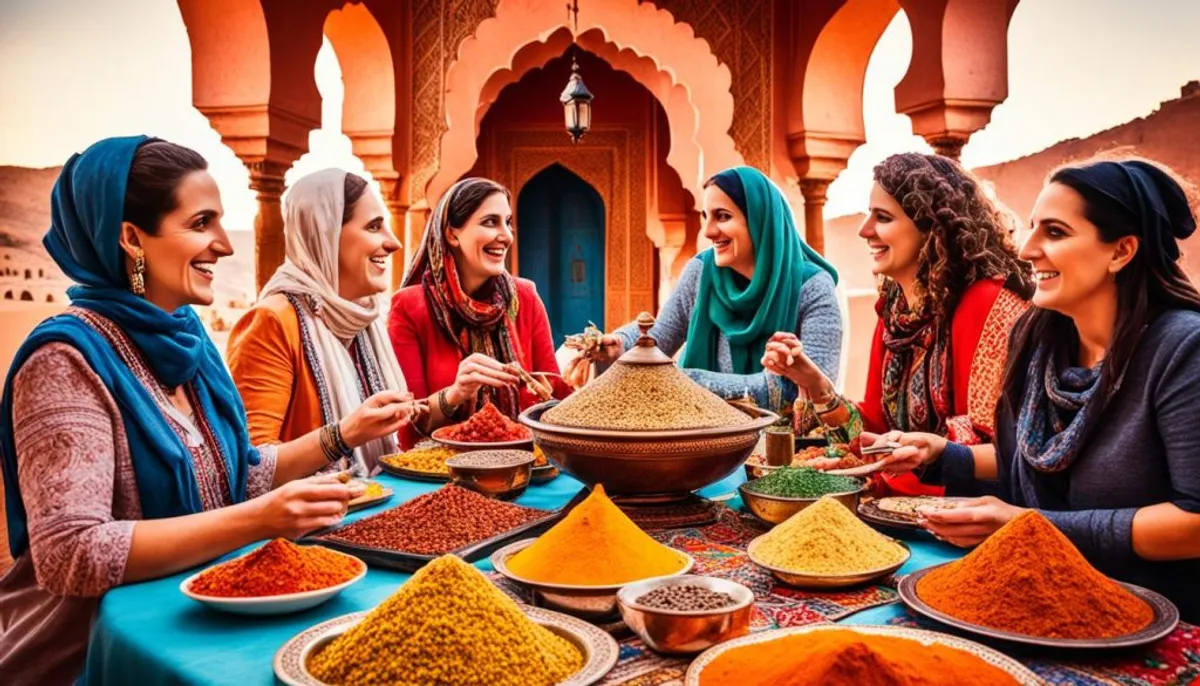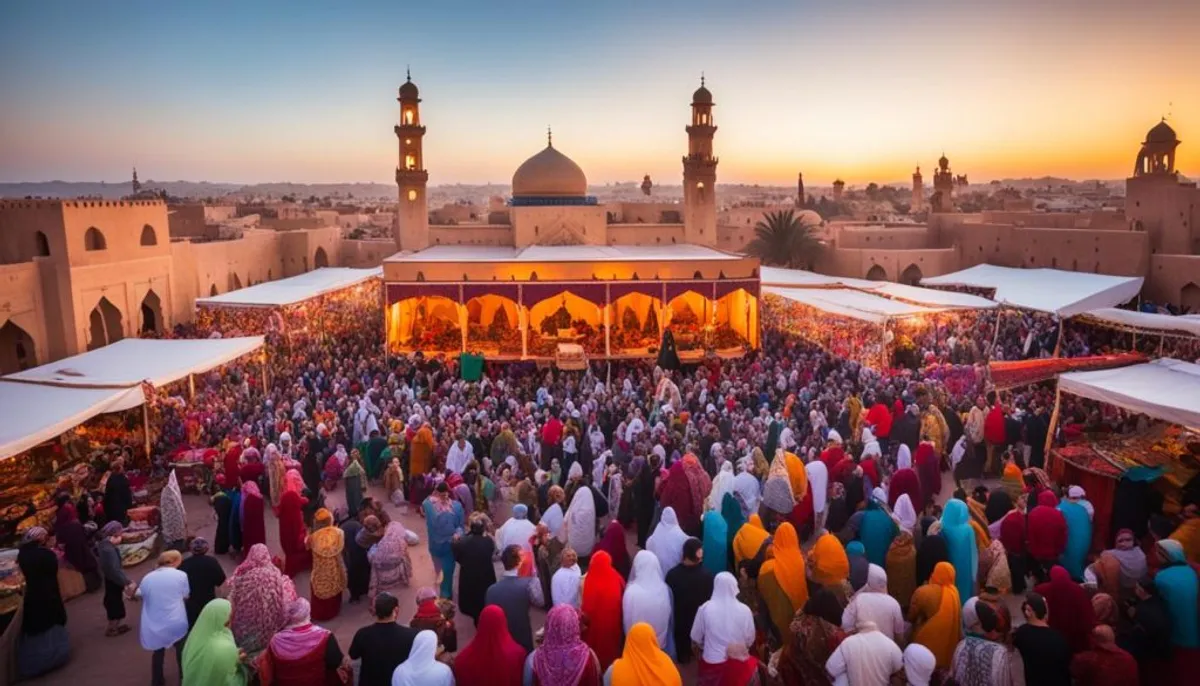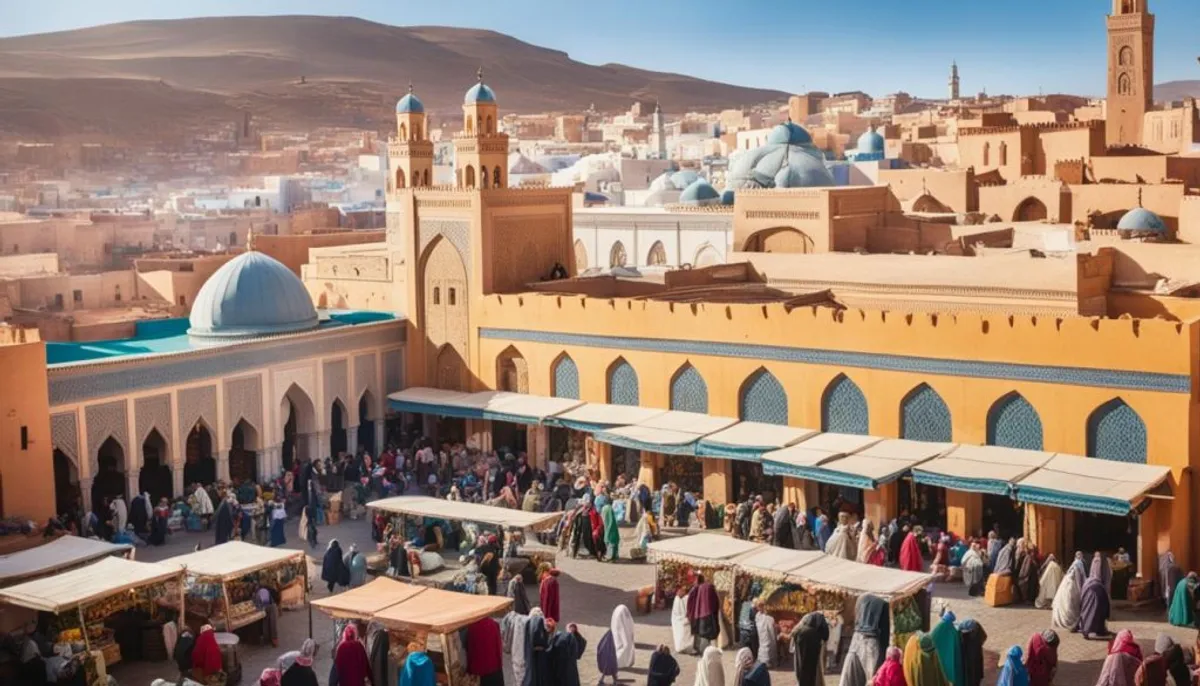Morocco is a country rich in culture, heir to centuries of traditions. Its culture is alive, visible in the small gestures of everyday life. The festivals, rituals, and daily habits testify to this.
The medinas are the ideal destination to discover Moroccan culture. Morocco and its people follow the Mediterranean art of living, recognized by UNESCO. This includes practices and dishes that make each day special.

What is Moroccan culture
Morocco is a rich country, with nomadic, Arab, and European influences. The narrow alleys of Moroccan cities and villages are full of unique moments. You can thus discover Moroccan culture up close.
Moroccans are very welcoming. They will invite you to drink tea with them. Their art of living in everyday life includes their cuisine, architecture, history, and religious diversity. The Berber culture is still present in many traditions.
To understand Moroccan culture, one must travel across the country and talk to people. These exchanges will reveal the richness and diversity of Moroccan traditions.
The culture of Morocco is unique, whether through gastronomy, craftsmanship, music, or architecture. You will experience an authentic and unforgettable experience in this fascinating universe.
Traditional festivals and celebrations
Morocco is rich in Moroccan festivals and celebrations. These events showcase the diversity of its Moroccan cultural heritage. Moroccan moussems and festivals are very important. They bring people together around ancient traditions and centuries-old traditions.
Moussems and festivals
Moroccan moussems are religious and popular celebrations. They celebrate local saints. Each region has its own moussem, such as the Moussem of Roses in Kalâat M’gouna or the Moussem of Moulay Idriss in Fez.
These events combine religious rituals, craftsmanship, music, and traditional gastronomy.
Moroccan festivals highlight local traditions. The Cherry Festival in Sefrou celebrates the cherry harvest. The Gnaoua Festival in Essaouira celebrates Gnaoua music, recognized by UNESCO.

These Moroccan festivals and celebrations allow Moroccans to gather. They also allow visitors to discover Moroccan culture in an authentic way.
Gnaoua music, UNESCO heritage
Gnaoua music is a treasure of Moroccan cultural heritage. It was recognized by UNESCO in 2019. This traditional Moroccan music comes from sub-Saharan African slaves. It takes us on a spiritual and cultural journey.
The Gnaouas have created their own musical rituals. They use percussion, singing, and dancing. During the ceremonies, they wear colorful costumes and play lguembri and qraqeb.
These instruments create an enchanting rhythm. They encourage spectators to dance. This showcases the strength of Moroccan culture.
| Instrument | Description |
|---|---|
| Lguembri | Traditional lute of the Gnaouas, with deep and captivating sounds |
| Qraqeb | Metal castanets used to accompany songs and dances |
Gnaoua music is a treasure of Morocco. It showcases the richness and diversity of traditional Moroccan music. Its rituals and traditions are essential to the country's cultural identity.
Moroccan architecture, a tourist asset
Morocco stands out for its exceptional Moroccan architecture. It is a major asset for Moroccan tourism. Its Moroccan medinas and imperial cities attract visitors from around the world. They offer a fascinating glimpse into its Moroccan architectural heritage.
Medinas and imperial cities
The Moroccan medinas are architectural treasures. Fez, Marrakech, Meknes, and Tetouan have medinas that are UNESCO World Heritage sites. They showcase the evolution of Moroccan architecture over the centuries.
The imperial cities of Morocco such as Rabat, Marrakech, Meknes, and Fez captivate with their fortifications and palaces. These historic cities offer an unforgettable journey back in time.
| City | Architectural features |
|---|---|
| Fez | Medina listed as a UNESCO World Heritage site, Al-Qaraouiyine Mosque, Dar Batha Palace |
| Marrakech | Historic medina, Koutoubia, Bahia Palace, El Badi Palace |
| Meknes | Imperial city, Bab Mansour gate, Heri es-Souani, Mausoleum of Moulay Ismail |
| Rabat | Imperial city, Hassan Tower, Mohammed V Mausoleum, Kasbah of the Oudaias |
The Moroccan architecture attracts tourists with its geometric patterns and terraced roofs. It offers an authentic cultural experience. Travelers are captivated by the beauty of this unique Moroccan architectural heritage.
Moroccan gastronomy, unique flavors
Moroccan gastronomy is very famous. It is rich in flavors and traditions. Moroccan cuisine is known everywhere for its typical dishes and its unique culinary art.
Couscous is a beloved national dish. Tagines, simmered in clay pots, are also very well-known. Sweets like gazelle horns and msemmen (flaky pancakes) are highly appreciated.
Moroccan gastronomy is also known for its tradition of hospitality. Drinking mint tea or sharing a meal is an art. These moments are very important in Moroccan culture.
You can discover Moroccan gastronomy in riads, restaurants, or stalls. It will introduce you to Moroccan culture. A unique culinary experience not to be missed!
Religion and spirituality in Morocco
Morocco is predominantly Muslim, with 99% of the population practicing Islam. The king plays a role as the supreme religious leader. However, the country is also known for its religious diversity. Jews and Christians have the freedom to practice their spirituality.
Moderate Islam and diversity
Islam is the main faith in Morocco. However, the practice of this faith is moderate. This stems from the influence of Europe and the West. This moderation shows an open-mindedness and respect for religious diversity.
- Morocco is home to an ancient Jewish community, dating back to antiquity.
- The Christian community, though small, enjoys freedom of worship.
- This religious diversity is essential to Moroccan identity, showcasing the cultural richness of the country.

Spirituality in Morocco is marked by a moderate Islam and a deep religious diversity. This demonstrates the tolerance and open-mindedness of Moroccan society.
Moroccan craftsmanship, ancestral know-how
Morocco is known everywhere for its Moroccan craftsmanship and its ancestral know-how. It combines Arab, Berber, Jewish, and Andalusian influences. This Moroccan artisanal heritage has attracted visitors for centuries. Artisans in the souks and bazaars keep their ancient techniques alive.
The country offers many treasures, such as Berber carpets, colorful pottery, silver jewelry, and Moroccan artisanal products made of leather. Each region has its specialties, showcasing the richness and diversity of Moroccan craftsmanship.
| Artisanal specialties by region | Ancestral techniques |
|---|---|
| Fez: Ceramics, zellige, metalwork | Hand dyeing, weaving, embroidery |
| Marrakech: Carpets, pottery, leather | Metalworking, forging, cabinetry |
| Meknes: Basketry, artistic ironwork | Engraving, calligraphy, mosaic |
This Moroccan craftsmanship is an asset for tourism. It showcases the culture and creativity of Morocco. Artisans work hard to keep these Moroccan artisanal traditions alive for visitors.
Conclusion
Morocco is a unique cultural treasure. It blends ancient traditions and modernity in balance. The Gnaoua music, recognized by UNESCO, colorful festivals, the architecture of the medinas, and the delicious cuisine make it a rich and diverse place.
By visiting Morocco, immerse yourself in this rich culture. Learn its ancient rituals and let yourself be carried away by the beauty of its landscapes. The cities and souks will welcome you with warmth and kindness.
Morocco, with its culture and traditions, promises a memorable journey. Your senses will be stimulated, and your mind will be at peace.
RelatedRelated articles


